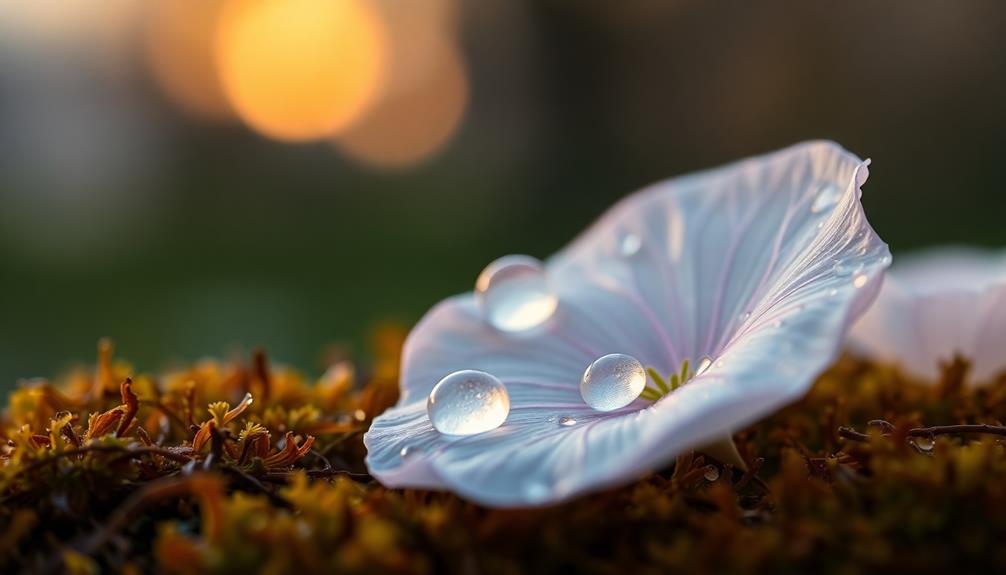Green smells fresh and lively, just like freshly cut grass and crisp, dewy leaves. It can remind you of the earthy scent after a rain. You might catch hints of galbanum, which gives a slightly bitter touch, and violet leaves that add a grassy smell. Sometimes, it even includes a zesty note from tomato leaves. Green fragrances evoke feelings of renewal and calm, making you feel connected to nature. You can find these scents in lush forests or vibrant gardens. Want to explore more about green scents and their unique blends? There's so much to discover!
Key Takeaways
- Green scents evoke freshness akin to crushed leaves, damp earth, and lush grass, transporting you to nature-filled environments.
- Key notes include galbanum for earthy bitterness, violet leaves for a grassy character, and tomato leaves for a surprising tartness.
- Synthetic notes like Cis-3-Hexenol enhance the lively freshness, making green fragrances vibrant and invigorating.
- Green fragrances symbolize renewal and vitality, promoting feelings of calmness and rejuvenation.
- They are often associated with natural settings like forests and gardens, emphasizing the beauty of life and nature.
Introduction
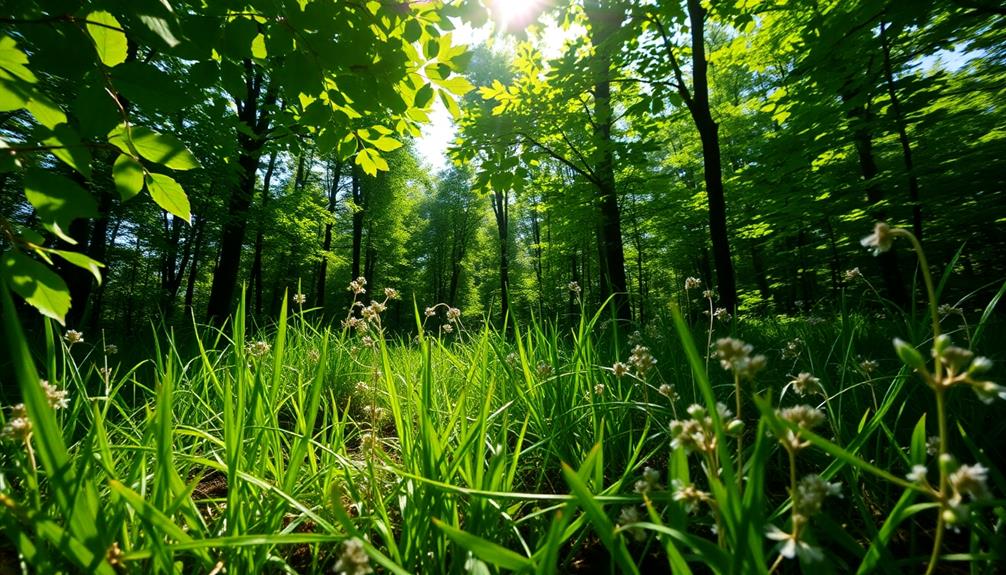
When you think of green scents, imagine the refreshing aroma of a sunlit garden after a rain shower.
Green fragrances capture this feeling perfectly, evoking the scents of fresh, crushed leaves, cut grass, and damp earth. They create a natural and revitalizing experience that can brighten your day.
Common green notes like galbanum, violet leaves, and mint contribute to the unique, fresh, and grassy aromas you may find in many perfumes.
These green notes often carry a slight bitterness and dryness, setting them apart from more culinary or spicy scents.
Historically, green fragrances made a splash in 1947 when Balmain introduced Vent Vert, showcasing the green floral scent with a notable use of galbanum.
Today, you can find modern interpretations in fragrances like Martin Margiela's Untitled and Chanel's №19, which emphasize their green profiles to evoke a sense of nature and renewal.
Description of the Smell
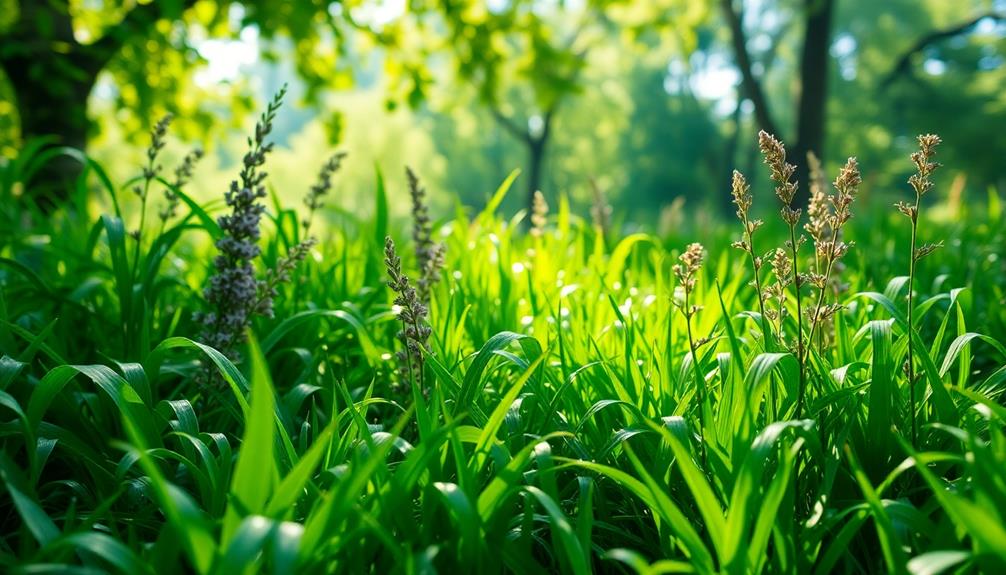
There's something undeniably invigorating about the smell of green scents, transporting you to lush landscapes filled with life. When you breathe in, you might catch a whiff of freshly cut grass, reminding you of warm, sunny days in the park.
Green fragrances often evoke that feeling of renewal, like the first signs of spring. You might notice green notes like galbanum, which adds a bitter, earthy touch, or violet leaf, with its watery and grassy character.
As you explore these scents, think about the vegetal aroma that brings to mind crushed leaves and garden herbs. You might even pick up on cucumber-like scents or the freshness of sweet peas.
The tartness of tomato leaves can also surprise you, adding a bright twist. Many green fragrances use synthetic notes like Cis-3-Hexenol to enhance that lively freshness, making the scent even more dynamic.
Source and Composition
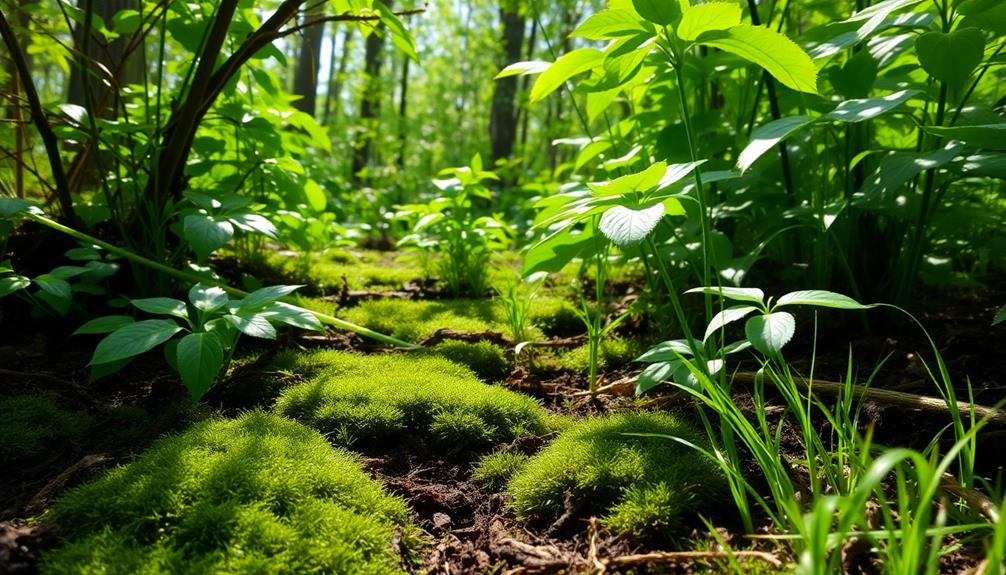
The source and composition of green fragrances draw heavily from nature's offerings, delivering an aromatic experience that captures the essence of fresh foliage and vibrant gardens.
These scents often feature green notes that remind you of dewy leaves, crisp grass, and lively herbs. Key ingredients like galbanum provide earthy bitterness, while violet leaf adds a fresh, metallic aroma. Tomato leaves contribute a tart, vegetal scent that enhances the overall green experience.
You'll also find synthetic green notes, such as Cis-3-Hexenol and Triplal, which boost the freshness and depth of green fragrances. Natural sources like blackcurrant buds, mint, and pine needles each offer unique aromatic profiles, making the green scent even more exciting.
When blending green notes, perfumers often mix them with contrasting elements like sweet florals or warm woods. This creates a balanced and multifaceted fragrance that keeps you coming back for more.
Typical Scenarios or Environments
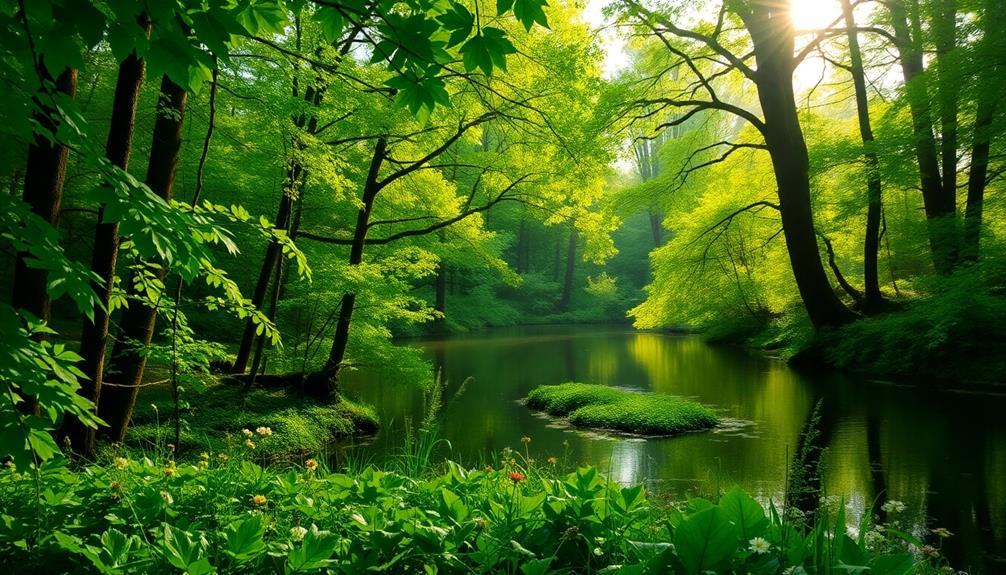
Stepping into a lush forest instantly immerses you in the refreshing aroma of nature, where crushed leaves and fresh grass create a vibrant atmosphere.
As you stroll along the winding paths, you can breathe in the invigorating green smells that fill the air. Each step reveals a new scent, from the earthy notes of damp moss after a rain to the sweet aroma of wildflowers peeking through the undergrowth.
Visiting botanical gardens is another perfect scenario to experience these delightful scents. Here, you're surrounded by a variety of plants, each contributing its unique fragrance.
You might catch the crisp scent of freshly cut grass or the herbal notes from various shrubs.
Even urban settings offer moments to enjoy green smells. Community parks are often filled with the combined scents of grass, shrubbery, and trees, creating a mini-escape from the busy city.
In these environments, the scent of green represents renewal and life, reminding you of the beauty and freshness nature has to offer.
Emotional or Cultural Associations

Experiencing the vibrant scents of nature often sparks deeper emotional and cultural connections. When you breathe in green notes, like freshly cut grass or crushed leaves, you might feel a wave of calmness and rejuvenation.
These scents are a symbol of renewal, reminding you of the beauty of growth and new beginnings. Many people enjoy wearing green perfumes because they evoke feelings of freshness and cheerfulness, especially during springtime.
Culturally, green holds different meanings. In Western cultures, it represents health and vitality, while in China, jade green symbolizes youth.
In Japan, green conveys eternal life, showcasing the importance of the color across various cultures. Lighter greens can lift your spirits, while darker shades suggest harmony and reliability.
Your emotional associations with green scents can also be influenced by personal experiences. Maybe a childhood memory of playing in a lush park brings you joy, or perhaps a family garden evokes feelings of love.
Each person's connection to green is unique, shaped by age, language, and experiences in nature. So, take a moment to explore how green smells resonate with you!
Health or Safety Considerations

Often, when choosing green fragrances, it's crucial to consider their health and safety implications. Many green notes come from natural sources like galbanum, violet leaf, and mint. These essential oils can promote relaxation and help reduce stress, making them great for your mental well-being. When you breathe in these scents, you might feel refreshed and revitalized, enhancing your overall mood.
However, it's important to be aware of synthetic green notes. While they can create appealing fragrances, they may cause allergic reactions in some sensitive individuals. That's why ingredient transparency is vital. Always check what's in your fragrance!
As consumers, you're increasingly seeking eco-friendly and sustainably sourced products, reflecting a growing awareness of health and environmental safety.
Regulatory bodies also play a role, requiring safety assessments for both natural and synthetic fragrance ingredients. This ensures that the products you use meet safety standards.
Final Thoughts
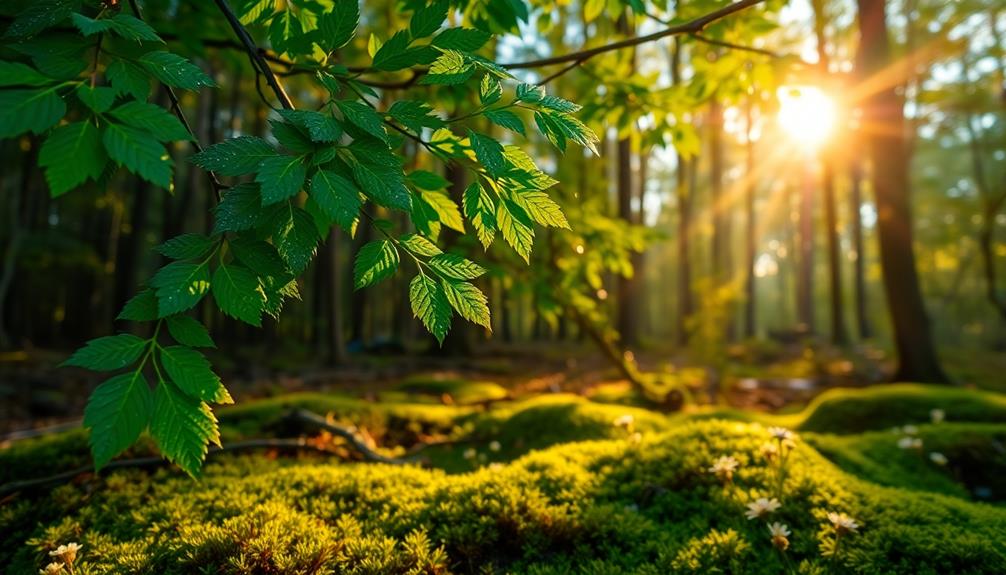
In summary, green fragrances offer a vibrant connection to nature, capturing the essence of fresh leaves and grassy meadows. When you think of green scents, imagine the refreshing smell of crushed leaves, cut grass, and aromatic herbs.
These fragrances often include key green notes like galbanum, violet leaves, and even tomato leaves, each adding its own unique aroma. You might notice that some green scents are slightly fruity, blending fresh and grassy notes with floral or fruity elements to create a delightful experience.
The lightness and coolness of these fragrances can evoke feelings of renewal and vitality. With modern twists, synthetic green notes like Cis-3-Hexenol and Triplal enhance the overall scent, making it even more exciting.
Whether you prefer a crisp, earthy aroma or something more green and fruity, there's a green fragrance out there for you. These fragrances often feature notes of fresh herbs, citrus, or even leaves, evoking the sensation of being immersed in nature. For example, have you ever wondered what yuzu smells like? This unique citrus fruit offers a delightful blend of tartness and brightness, with a zesty edge that can instantly uplift and refresh any fragrance composition.
Frequently Asked Questions
What Is the Smell of Green?
When you think of the smell of green, you'll imagine fresh, crisp aromas like cut grass and crushed leaves. It's a vibrant, earthy scent that evokes nature's vitality and the feeling of renewal.
What Does Simple Green Smell Like?
Simple Green smells fresh and clean, blending citrus and herbal notes. You'll notice hints of freshly cut grass, creating an invigorating aroma. It's pleasant and not overpowering, enhancing your cleaning experience while tackling dirt effectively.
What Is Fragrant Green?
Fragrant green refers to scents that evoke fresh, natural aromas from foliage. You'll find notes like galbanum and violet leaves, creating a light, crisp profile that's often enhanced with citrus or aquatic elements for freshness.
What Ingredient Is Green Smell?
When you explore green smells, you'll find ingredients like galbanum, violet leaves, and mint. These elements create refreshing, natural aromas that evoke the essence of nature, making your fragrance experience vibrant and invigorating. The bright, crisp notes impart a sense of freshly cut grass or a forest after rain, grounding the wearer in a serene, earthy atmosphere. Interestingly, while we often associate green scents with life on Earth, scientists speculate about distant worlds and their chemical environments too, such as Mercury. Though it’s impossible to directly smell a planet, researchers can theorize about **Mercury’s potential odor and composition** based on its atmospheric makeup, which could include metallic and sulfuric elements, offering a striking contrast to the organic freshness of green smells.



